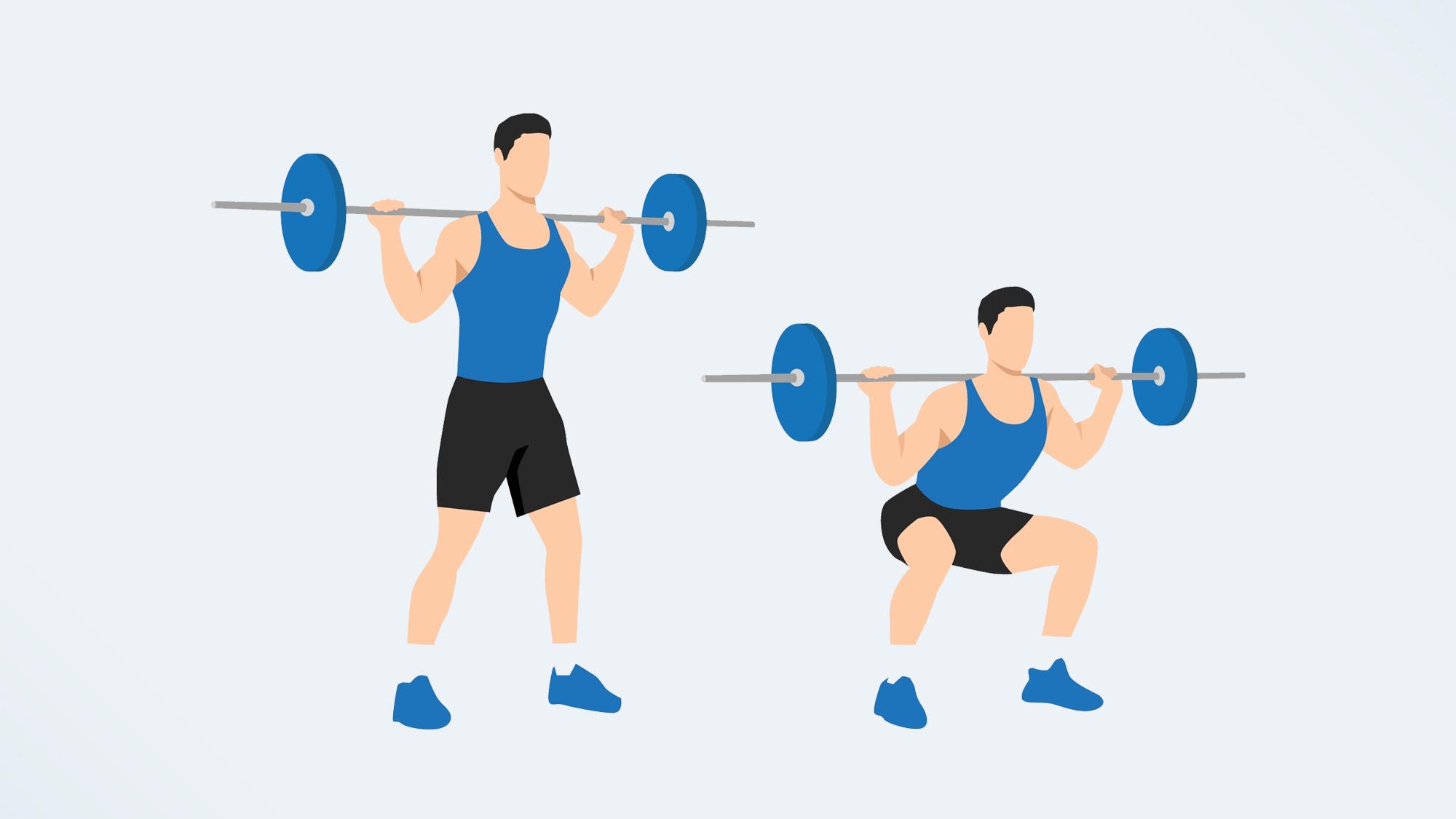
Squats are the bread-and-butter exercise of lower body strength programs, helping to strengthen and grow muscle in your quads, glutes, hamstrings, hip flexors, lower back and core muscles. But they’re easy to get wrong, and you might not even realize you’re making any mistakes.
Pain in your lower back or joints could indicate that your form might be off, as is “butt winking,” common in beginners or people with limited mobility, causing rounding in the lumbar spine.
But fear not because we’ve drilled down on the squat technique below. Learn how to squat with perfect form, the benefits and common mistakes below.
Squats: Benefits
Squats are a compound exercise that primarily strengthens and builds muscle in your lower body, especially powerhouse muscles like the quads and glutes. Squats take on various forms, from goblet squats to sumo squats, and you could use your bodyweight, resistance bands, the best adjustable dumbbells, barbells or kettlebells.
In short, the options are endless. And other forms, like yogic and Cossack squats, are even used to build flexibility and increase mobility in the lower body, including your back, hips, knees and ankles. Developing more range of motion could help you improve squat depth and maximize the benefits of the exercise.
Squats form a major part of strength training, maximal powerlifting and cardio workouts, so there’s something for everyone. Find out how to test your one rep max here and why it matters for developing your squat potential.
How to squat
Here’s step-by-step instructions.
Get instant access to breaking news, the hottest reviews, great deals and helpful tips.

- Stand with your feet hip or shoulder-width apart. You can position your feet slightly wider
- Point your toes slightly outward at 45 degrees, or forward facing if that’s more comfortable. Engage your core
- Bend your knees and send your hips back as if you’re sitting on a chair directly beneath you
- As you squat down, push your knees outwards so that they track directly over your middle toes and keep the weight distributed through your feet
- Lift your chest, keep looking straight ahead and maintain a flat back. Avoid hunching or rounding your spine
- Lower until your thighs are parallel to the floor, keeping your knees aligned with toes, heels planted and spine neutral, then push through your heels to stand back up.
Squats: Common mistakes
We’ve dedicated whole articles to this one, from limited mobility to lifting too heavy. If you think you could be doing squats wrong, here’s the most common mistake and how to fix it. We’ve also covered butt-winking earlier in this article if that sounds familiar.
But here are the four most common squat mistakes we see summarized below.
Lifting the heels
Limited mobility in the hips, knees or ankles could prevent you from achieving depth in your squat. When this happens, people often shift weight onto the balls of the feet and raise the heels, placing more pressure on their joints.
Keep your heels planted down, creating a tripod foot position. Remember, your feet are the foundation of setting up the squat exercise, so it needs to be solid. Focus on three points of contact — heel, big toe and little toe — distributing the weight evenly across the foot and preventing the knees from turning in.
Knees caving in
As we mentioned, knees turning in is the opposite of what we want to see during squats. Externally rotate the knees by adopting the tripod foot position. Practice turning the knees to track in line with the toes, and notice how your hips open. Now squeeze your glutes to engage them, and reinforce the tripod position by pressing down through your feet.
Butt-winking
Ah, the famous butt-wink. Beginners to the squat or those with tight hips or ankles might find it harder to achieve depth in a squat. Face a mirror side-on, then perform a squat, keeping a close eye on your lower back. If you notice rounding, that’s a butt wink. We cover everything you need to know earlier in this article.
Knees and toes
If you enjoy getting out and about in fitness, chances are, someone has told you it’s “bad” if your knees track over your toes during squats. Untrue. What it really comes down to is flexibility and excessive forward leaning.
If you can lower into a deep squat while keeping your form tight, it isn’t a problem if your knees slightly move past your toes. However, if tracking your knees too far forward and lifting your heels occurs in tandem, it can indicate a lack of flexibility and put stress on your knees.
Besides, everyone is built differently and with varying mechanics. So, focus on lowering directly down toward the floor, sending your hips behind you and hinging at your hips with a tall posture, and avoid leading with your chest; this should help nip excess leaning in the bud.
More from Tom's Guide
- Mobility exercises for hip flexor pain
- I walked 6,000 steps with the Apple Watch 8 and Fitbit Inspire 3, here's which was more accurate
- How to do squats with resistance bands.

Sam Hopes is a level 3 qualified trainer, a level 2 Reiki practitioner and fitness editor at Tom's Guide. She is also currently undertaking her Yoga For Athletes training course.
Sam has written for various fitness brands and websites over the years and has experience across brands at Future, such as Live Science, Fit&Well, Coach, and T3.
Having coached at fitness studios like F45 and Virgin Active and personal trained, Sam now primarily teaches outdoor bootcamps, bodyweight, calisthenics and kettlebells.
She also coaches mobility and flexibility classes several times a week and believes that true strength comes from a holistic approach to training your body.
Sam has completed two mixed doubles Hyrox competitions in London and the Netherlands and finished her first doubles attempt in 1:11.
